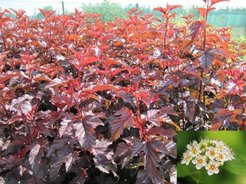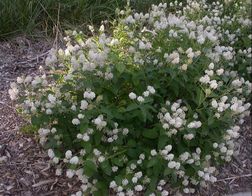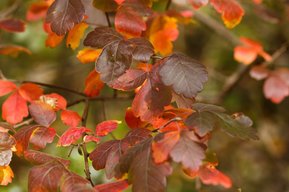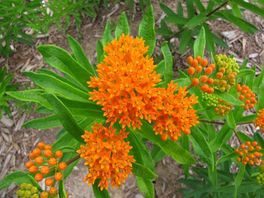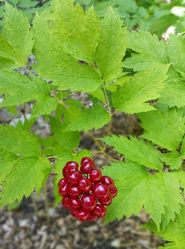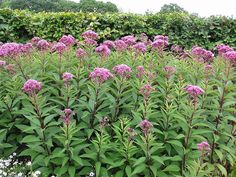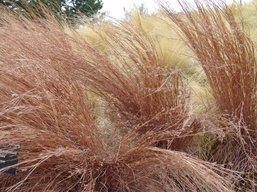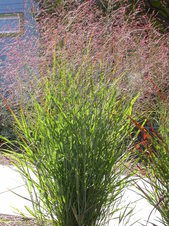Alternatives to Japanese Barberry
Japanese barberry is an invasive species that arrived by way of our gardens. Its cheery foliage and bright fruits harbor more problematic traits, like the ability to dominate a forest understory (as in the above photo) and harbor Lyme disease-bearing black-legged ticks. As you’re removing it from your landscape, here are a few native options that we recommend as alternatives--but the sky's the limit!
You can also download this page as a printable PDF.
You can also download this page as a printable PDF.
Shrubs: Plants that look & grow like barberry
|
Ninebark (Physocarpus opulifolius) is a great replacement for barberry—it’s tolerant of many soils and light availabilities, looks good when pruned and when allowed to grow wild, and ninebark is highly prized by birds, pollinators, and other wildlife. It has clusters of white flowers in spring and dry seeds in fall. There are even a few cultivars (clones) with maroon foliage, if you want a close match to barberry.
Photos courtesy Leonora Enking and Dan Mullen |
|
New Jersey tea (Ceanothus amercanus) can really handle the sun and dry, sandy soils, though it’s fine with a little less sun or more water. Its bright white clusters of flowers attract pollinators (even hummingbirds!), and it keeps a pleasantly dense, rounded shape without pruning, like barberry.
Photo courtesy Dennis Stevenson |
|
Fragrant sumac (Rhus aromatica) will stay low and spread to cover an area nicely without getting out of control. With inconspicuous flowers and fruits that nonetheless attract butterflies, it tolerates all but the wettest soils. Its leaves can turn reddish in strong sun, and in fall the leaves turn a glorious maroon.
Photo courtesy Tom Potterfield |
Other Shrub Ideas: Low blueberry (Vaccinium angustifolium), black chokeberry (Aronia melanocarpa), red-osier and pagoda dogwoods (Corunus stolonifera, C. alternifolia)
Perennials: Plants that will die back each year and start over, and often stay a little smaller
|
Butterflyweed (Asclepias tuberosa) does a great job of staying short and compact! Its brilliant orange flowers attract butterflies and many other pollinators, including hummingbirds, and the leaves feed the caterpillars of monarch butterflies. It loves the sun, is drought-tolerant, and even thrives in rocky soil; deer won’t eat it either! It’s pretty well-mannered for a milkweed, not sprouting as much as other species.
Photo courtesy Mark Funk |
|
Red baneberry (Actaea rubra) grows in shade or part-shade, is happier in moist soils, and is rarely taller than knee-high. Like barberry, it has bright red fruits in summer. These fruits are poisonous to humans, but songbirds and gamebirds love them! Its white spring flowers have a rosy fragrance and attract a variety of pollinators.
Photo courtesy K. Grzesiak |
|
Joe-pye weed (Eutrochium maculatum) is one of the taller perennials, and in midsummer is topped with fragrant, pink-purple flowers that pollinators, especially butterflies go crazy for! It prefers full sun and moist to wet soils and tolerates nibbling by deer (that don’t like it much anyway).
Photo courtesy A. Barra |
Grasses: Change it up; you’re not limited to showy-flowering plants! Grasses are great habitat.
|
Little bluestem (Schizachyrium scoparium) is a native grass that stays a little taller than knee-high and grows in neat clumps. In fall, these clumps are stunning, turning suddenly bronze-red with frost and feeding birds throughout winter with their feathery seeds. Little bluestem prefers full sun, but, like barberry, tolerates drought, rocky soil, and even deer.
Photo courtesy Drew Avery |
|
Switchgrass (Panicum virgatum) is a taller grass, looking more like traditional ornamental grasses. It stays in clumps, and its thin stalk of miniscule flowers from a pink-tinged mist over top late in the year. Switchgrass likes full sun and moist soils, though it tolerates drought.
Photo courtesy Matt Lavin |
